How the Internet Works
LAN - Local Area Network
A local area network (LAN) is a collection of devices connected together in one physical location, such as a building, office, or home. A LAN can be small or large, ranging from a home network with one user to an enterprise network with thousands of users and devices in an office or school. We are all familiar with our home’s Local Area Network. That’s how most of us from home connect to the Internet. Our home’s LAN allows multiple devices - clients to connect either via an Ethernet cable or wirelessly to a switch, which is itself connected to a modem. A gateway is a single unit that combines the responsibilities and capabilities of both a modem and a switch.
LAN's single defining characteristic is that it connects devices that are in a single, limited area. In contrast, a wide area network (WAN) or metropolitan area network (MAN) covers larger geographic areas, and some WANs and MANs connect many LANs together. 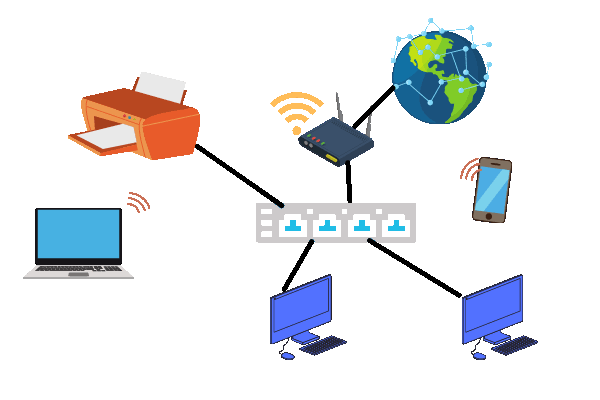
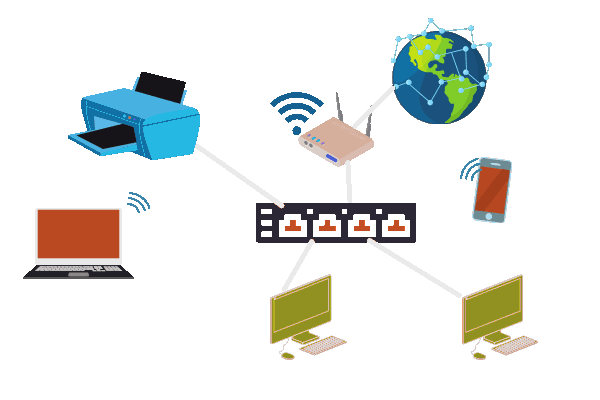 Each device that can connect to a network does so through its Network Interface Card (NIC). Each NIC has a unique Media Access Control (MAC) address, which is a physical, hardcoded identifier that distinguishes that device on a network.
Each device that can connect to a network does so through its Network Interface Card (NIC). Each NIC has a unique Media Access Control (MAC) address, which is a physical, hardcoded identifier that distinguishes that device on a network.
Also, each device on a network can be statically or dynamically assigned an IP address by a switch, through the DHCP protocol. Unlike a MAC address, an IP Address is not hardcoded into a device, but is instead logical and hierarchical, which allows a device to be more easily located based on its IP address.
Switch is a networking device that sends data to the appropriate device within the LAN, using an ARP table that matches each IP address to a MAC address.
Modem is a device that serves as a bridge between a LAN and a WAN / Internet. Devices on a LAN could still communicate with each other without a modem, but they wouldn’t be able to access the Internet.
Gateway is the combination of both a switch and a modem.
Ethernet is the protocol that allows communication within a LAN.
802.11 is the protocol that allows wireless communication (WiFi) within a WLAN (Wireless Local Area Network). Designations a, b, c, g, h, n, ac, or ax further distinguish the wireless speeds and frequencies at which devices with that protocol compatibility can operate.
ISP - Internet Service Providers
LAN connects to an ISP’s infrastructure via modem (or Gateway); we usually pay our ISP a monthly fee for this service, which ultimately allows us to connect to the wider Internet. ISPs typically offer plans with different connection speeds, which establish different bandwidth levels for the customer, with the higher bandwidth plans costing more. Through a series of routers, ISP’s infrastructure directs traffic between the many households it serves and the wider Internet. 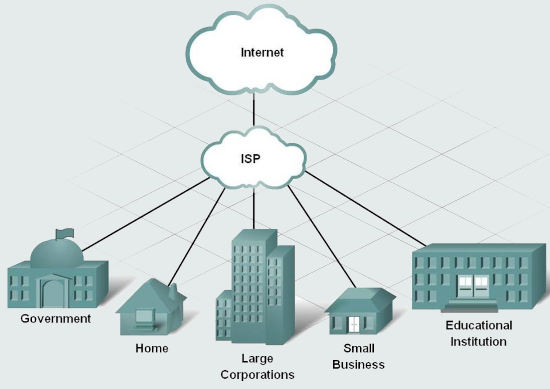
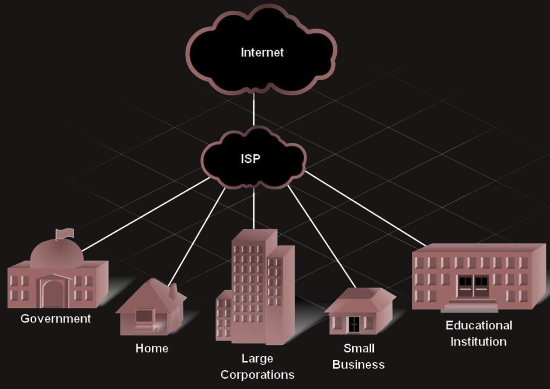 Bandwidth is the amount of data that can be sent during a specific unit of time (typically a second) across a network.
Bandwidth is the amount of data that can be sent during a specific unit of time (typically a second) across a network.
Mbps vs. MBps, megabits per second vs. megabytes per second - a 10 Mbps connection doesn't mean that it would take one second to download a 10 MB file, but that would actually require an 80 Mbps connection.
Router is a switch that can also send data across networks, from one network to other networks.
DNS - The Domain Name System
Every time we go to a website we’ve never been to before, our browser has to first triangulate the IP address associated with that domain. It first hits up the DNS Servers supported by our ISP. If those servers don’t have a record of that domain either, they then forward the request further up the chain until it gets to the DNS, when the request travels down the DNS hierarchy from the root name servers down, until it finds the IP address of that domain name. Our browser will then cache that domain-to-IP address key-value pair so that it won’t have to look it up again the next time we enter that domain. 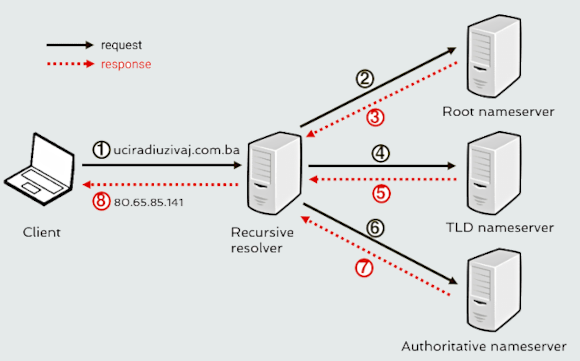
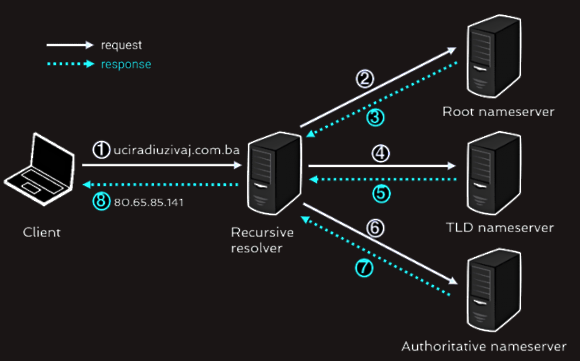 The A record is the entry that assigns an IPv4 address to a domain. Similarly, there is the AAAA record for an IPv6 address.
The A record is the entry that assigns an IPv4 address to a domain. Similarly, there is the AAAA record for an IPv6 address.
A domain name is a unique identifier that points to an IP address, or several IP addresses. A domain name consists of a combination of at least two parts: a top-level domain (TLD) to the right of the (rightmost) dot, and second-level domain (SLD) to the left of the (rightmost) dot.
A website is created by data that our browser downloads from a server with a specific address. Data exchange on a network requires an individual, unique identifier for each computer so that the data is obtained from the correct source. This identifier is called an IP address.
IP addresses are written according to IPv4 in the format xxx.xxx.xxx.xxx, where each x represents a digit, or even more complicated according to IPv6 in a hexadecimal notation. It's impossible to remember many of these addresses without writing them down. Most people would make a list that maps an IP address to a name. And that's exactly what the Domain Name System does – and why it's often referred to as the "telephone book of the internet".
This system translates human language into computer language. In this case, the domain is uciradiuzivaj.com.ba and represents human language. It always has a name-giving part (the so-called second level domain) and an ending (the so-called top level domain). This naming makes sense, as an address is read from back to front in DNS lookups (or DNS queries), so the first step in the DNS lookup process would be to find the DNS Servers that handle the .ba TLD. Once we’re at that branch of the tree, we can then look up the DNS Servers that handle the com SLD. Finally, once we’re at that secondary branch, we can then more specifically look up the uciradiuzivaj subdomain.
The Internet
The Internet connects ISPs, the DNS, and Cloud Services together, and allows them to communicate; it is a network of routers spanning across the entire world, connecting networks together.
Cloud Services include:
· Email Servers
· Web Servers
· Application Servers
· Database Servers
· Domain Registrars
· Certificate Authorities 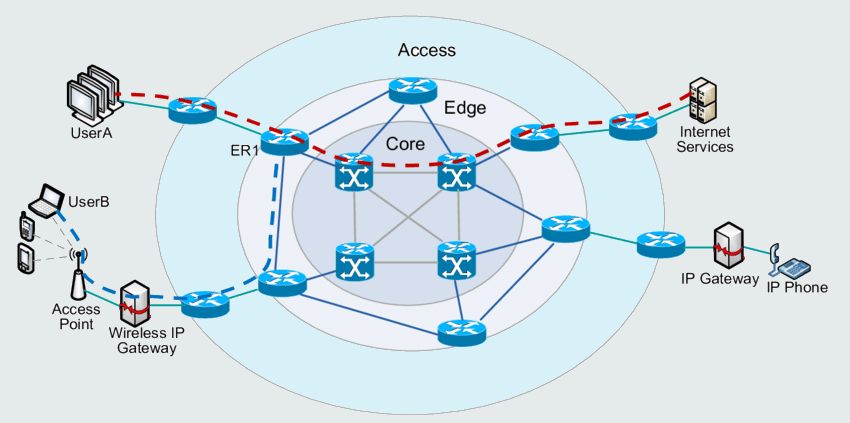
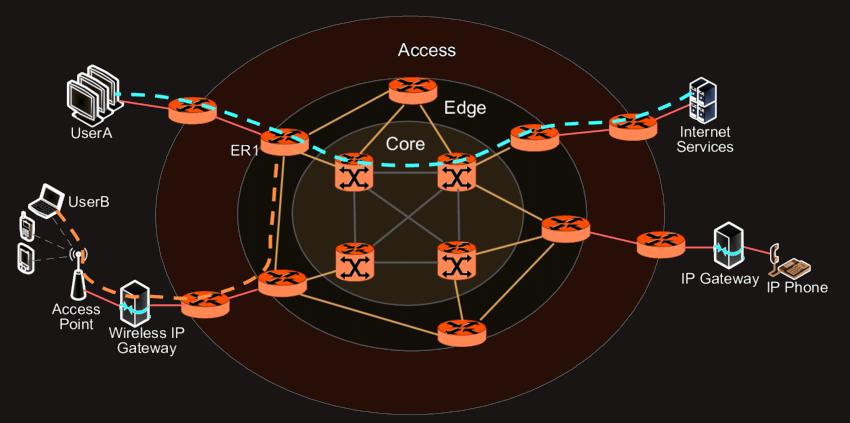 Each router redirects data across a hop to another router, getting the data progressively closer to its final destination IP address. Along the way, a signal will encounter certain types of latency, transmission delay. A router keeps track of all the IP addresses of the devices on its network, including other routers. This routing table allows the router to determine which router to send data to in order to get it closer to its destination.
Each router redirects data across a hop to another router, getting the data progressively closer to its final destination IP address. Along the way, a signal will encounter certain types of latency, transmission delay. A router keeps track of all the IP addresses of the devices on its network, including other routers. This routing table allows the router to determine which router to send data to in order to get it closer to its destination.







